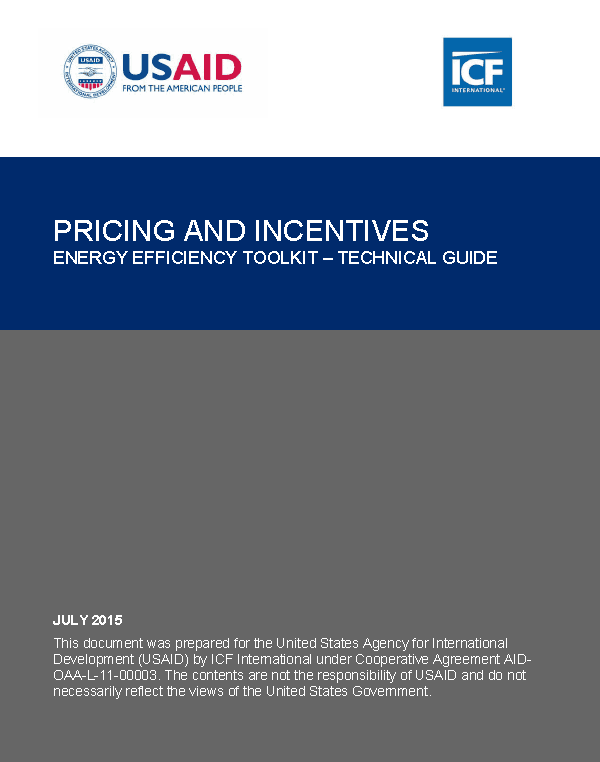Financial and non-financial incentives can help overcome barriers to the adoption of new technologies and behaviors among consumers while energy pricing structures can be designed to drive energy efficiency and conservation. In order for customers to appreciate the true value of energy efficiency, energy pricing should reflect the full cost of electricity production, transmission and distribution as well as take into account any negative externalities incurred along the way. Subsidies will, in general, dilute the perceived benefits of energy efficiency investments made by end-users. Government ministries or regulatory bodies are often best placed to fund and administer these incentive and pricing efforts and may support increased efficiency in low-income and other vulnerable populations. Utilities can also play a significant role in the delivery of energy efficiency programs if enabled by government and regulatory structures.
This technical guide discusses how financial incentives, non-financial incentives and electricity pricing schemes can be harnessed to improve energy efficiency. It also describes the conditions that enable these strategies to be effective.
DISCLAIMER
This publication was produced for review by the United States Agency for International Development. It was prepared by ICF as part of the Energy Efficiency Toolkit. The author’s views expressed in this publication do not necessarily reflect the views of the United States Agency for International Development or the United States Government.








Comment
Make a general inquiry or suggest an improvement.